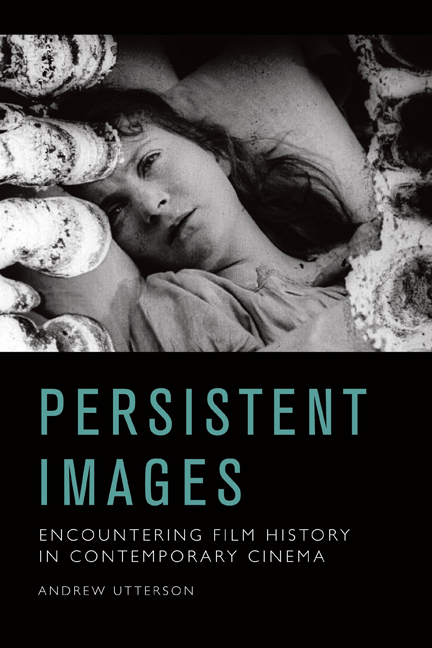Book contents
- Frontmatter
- Contents
- List of Figures
- Acknowledgements
- Introduction
- 1 Media Archaeology and the Memory of a Medium: Dawson City: Frozen Time
- 2 A Drone’s-Eye View of History: Francofonia
- 3 The Movie Theatre as Haunted Space: Shirin and 70×70
- 4 Recalling the Past Lives of Cinema: Uncle Boonmee Who Can Recall His Past Lives
- 5 3D Images at the Edge of History: Goodbye to Language and The Three Disasters
- 6 Voyaging in Deep Time: Voyage of Time: The IMAX Experience
- Notes
- Bibliography
- Index
5 - 3D Images at the Edge of History: Goodbye to Language and The Three Disasters
Published online by Cambridge University Press: 26 September 2020
- Frontmatter
- Contents
- List of Figures
- Acknowledgements
- Introduction
- 1 Media Archaeology and the Memory of a Medium: Dawson City: Frozen Time
- 2 A Drone’s-Eye View of History: Francofonia
- 3 The Movie Theatre as Haunted Space: Shirin and 70×70
- 4 Recalling the Past Lives of Cinema: Uncle Boonmee Who Can Recall His Past Lives
- 5 3D Images at the Edge of History: Goodbye to Language and The Three Disasters
- 6 Voyaging in Deep Time: Voyage of Time: The IMAX Experience
- Notes
- Bibliography
- Index
Summary
Extending an existential historiography, this chapter explores how shifts in technology – in this instance, experiments in 3D – might both engage the cinematic archive in one historical direction, while simultaneously seeking to reimagine the very nature of cinema in the other. If shifts in technology raise questions of obsolescence with regard to extant forms, they also offer new means to engage and reframe – literally and otherwise – conceptions of film history and collective cultural memory. This chapter proposes the renewal of cinema to be contingent on continued historical awareness, with a cine-literate – or even cinephilic – cognisance of film history an essential part of any contemporary – or future, for that matter – reimagining.
In terms of an evolving film history and how these moments of technological change might be theorised, it could be useful to consider the broader historical dynamics of the contemporary re-emergence of 3D and the resonance of its own past incarnations as they relate to the cinematic present. In this sense, experiments with 3D cinema, in particular, raise a series of larger questions: What, for example, might the recent return of 3D mean for the future of cinema? In terms of comparing both cinematic images and their underlying apparatuses, what might close analysis of 3D and 2D images tell us about the distinctive aesthetics and other specificities associated with these historically overlapping representational modes? And ultimately, what might the renewed interest in 3D cinema reveal about the history of cinema as a whole?
In the realm of a technologically mediated film historiography, in which mortal metaphors of departure question even the continued existence of cinema, there is arguably no better case study than veteran French filmmaker Jean-Luc Godard. Godard has long been associated with the fundamental relationships between technology, history and aesthetics, however complex or critical, from the starting point of a committed cinephilia. If, in fact, technological change holds the capacity to rupture or even destroy cinema, this same technology holds the concomitant potential to reinvent, that is, to stave off potential obsolescence through regenerative transformation. Accordingly, for Godard, a still resonant film history is explored via the technologies and representational modes of the present as a means to reflect on the broader status of cinema and its cumulative history precisely within and through the contemporary historical moment.
- Type
- Chapter
- Information
- Persistent ImagesEncountering Film History in Contemporary Cinema, pp. 91 - 114Publisher: Edinburgh University PressPrint publication year: 2020



